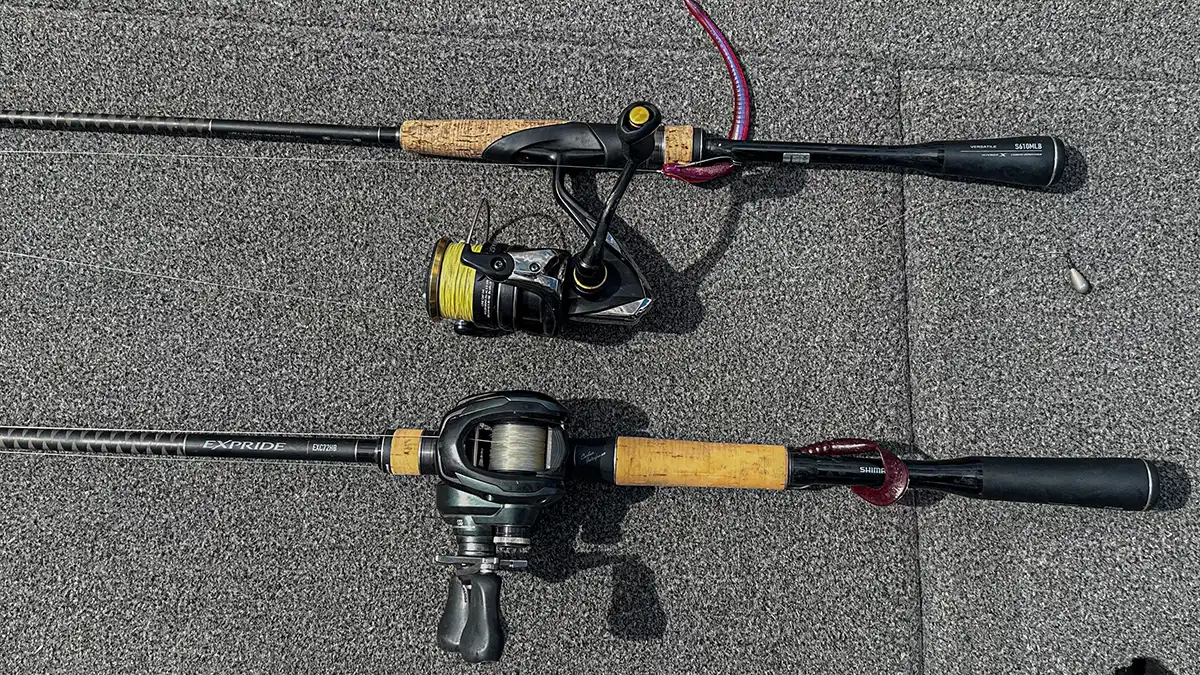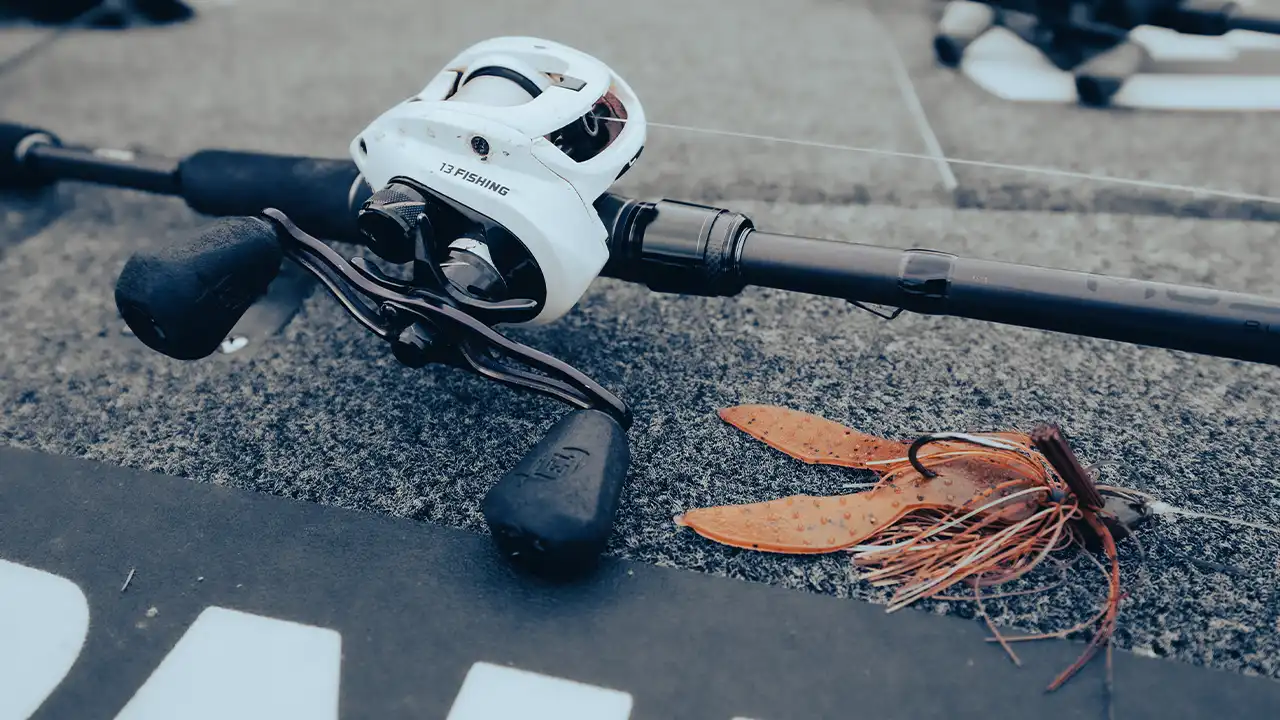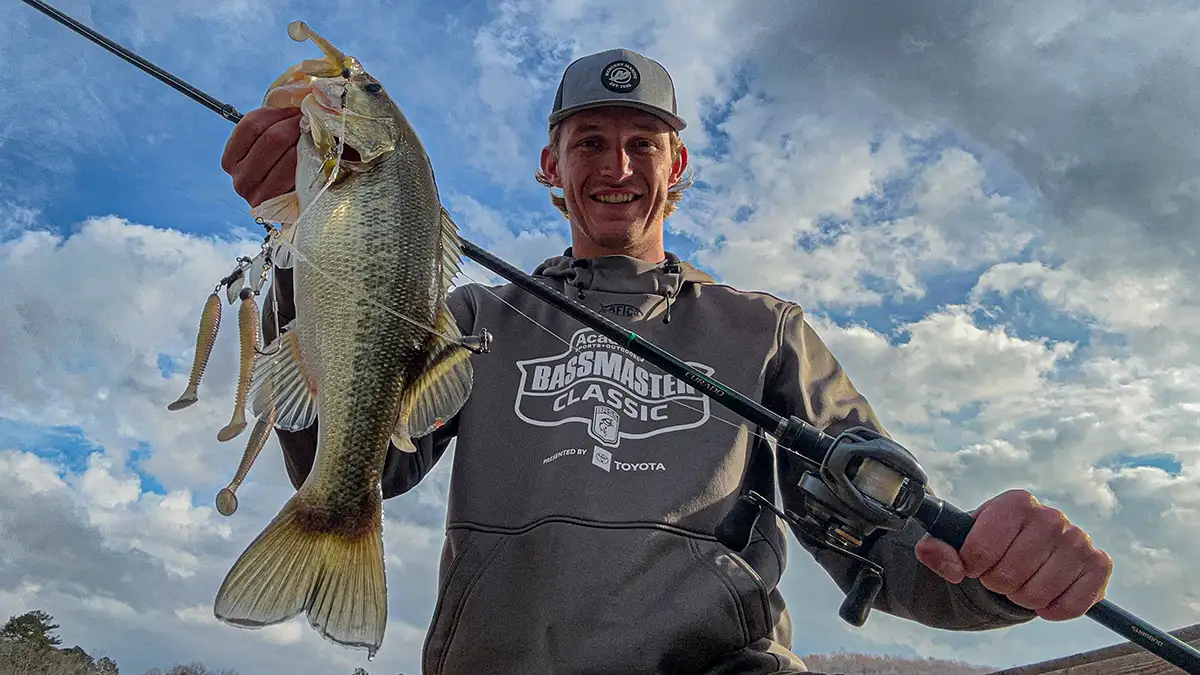Warning: Undefined variable $k in /home/nginx/domains/wired2fishcom.bigscoots-staging.com/public/wp-content/themes/understrap-child-0.6.0/functions.php on line 984
Warning: Undefined variable $k in /home/nginx/domains/wired2fishcom.bigscoots-staging.com/public/wp-content/themes/understrap-child-0.6.0/functions.php on line 987
With all the different fishing rods on the market today, it is hard to choose just one. And it can be even harder to choose the right rod for a specific technique. Here at Wired2Fish we get the chance to test out hundreds of different rods each year, and we’ve got a good eye for choosing the right one for a given situation. We’ll walk you through exactly how to choose a fishing rod based on the rod’s attributes and your desired fishing technique.

TECHNIQUE
When choosing fishing rods, you must first determine what technique you want to use them for. There are hundreds of different techniques, whether it be cranking, flipping a jig or throwing a topwater. Each technique typically has a specific set of baits associated with it, and the size of these lures is one of the biggest factors in choosing a rod.
If I’m wanting to throw baits such as a jig, Texas-rig or a big swimbait, I’m generally going to go with a casting rod. These rods are much heavier than their spinning rod counterparts, which is perfect for baits that require hard hooksets or heavy duty line. Pair a stout casting rod with the right baitcasting reel and you can yank the biggest fish out of heavy cover.
If I’m throwing lighter baits such as a drop shot, Ned rig or wacky rig, I generally go for a spinning rod. This style of rod is great for accurately casting tiny baits on light line. Throwing these lighter lures on a casting setups can get pretty cumbersome, which can directly effect your casting accuracy. Furthermore, spinning rods have a much lighter action which is perfect when your dealing with light-wire hooks and thin diameter line.

POWER
Both spinning and casting rods are rated by their “power,” which is the force needed to flex the rod. This can be anywhere from extra light to extra heavy, and basically describes how stiff your rod is from willow switch to broomstick. While each of these can be great when paired with an appropriate technique, I generally stick with three or four different powers to throughout my entire rod arsenal.
To start, I typically only use spinners if I need a rod with medium-light power for light baits. This set up is perfect for extremely small lures such as a Ned rig or a drop shot. This high level of flex allows your rod to do most the work, keeping the strain off of your fishing line. Use these to protect light lines and delicate mouths.
I use medium power rods in both casting and spinning setups. This is great for throwing slightly heavier tackle on spinning rods. I typically throw baits such as a jig and minnow, shaky head and Neko rig on this style of rod. The stiffer power leads to greater hook penetration while still allowing you to throw smaller, finesse applications. I typically use medium power casting rods whenever I’m throwing smaller treble hook baits such as a jerkbait or shallow diving crank. This is great for ensuring you don’t put too much pressure on your trebles resulting in lost fish.
The next action I use very frequently is medium-heavy. This is arguably the most versatile action, however I strictly use it on casting rods. You can throw anything from a spinnerbait to a jig on this power rod as its great for a wide range of techniques. This action is great whenever your using 15- to 20-pound line paired with a 3/8- to 1/2-ounce bait.
I use heavy power whenever Im planning on fishing around heavy cover. Techniques I often use with this action include frogging, flipping and swimming a jig. This power is great for both heavy-duty fluorocarbon and braided fishing line. This action is extremely stiff and perfect for winching big bass out of heavy cover.

LENGTH
Once you’ve determined the style and power of your preferred rod, you must then determine the length. The average bass fishing rod is around 7 feet long, however you can go shorter or longer depending on what you want to use it for. While this is largely personal preference, there’s a basic rule of thumb I use whenever I’m picking out a rod. A longer rod leads to increased casting distance, while a shorter rod tends to have better casting accuracy.
I use a shorter rod whenever I’m fishing around tight cover. In these situations casting accuracy is often everything, so using a shorter rod is great way to increase your performance. I also use a shorter rod on the majority of my spinning setups as well. I’m typically casting at isolated pieces of structures whenever I use a spinning rod, so accuracy is more important for me than casting distance. I often use anything from a 6-foot 10-inch to a 7-foot rod in these scenarios.
I utilize a longer rod whenever I’m fishing in open water. While a longer rod undeniably adds more casting distance, it also gives you more leverage when fighting fish. This is a great way to increase your landing percentage whenever you can. Some of the baits I generally throw on longer rods include a magnum crankbait, Carolina rig and a big jig. My longer rods generally range between 7 foot, 2 inches and 7 foot, 8 inches.

ACTION
Last but certainly not least, you must determine the action of your rod. Action refers to how responsive the tip of your rod is. The more moderate of an action the more parabolic your tip is, while a faster action results in a stiffer tip. Actions typically range from moderate to extra fast, and they are each suited for a different style of fishing. I use a moderate action whenever I’m throwing treble hook style baits. This action allows your rod to give on the hookset, preventing you from ripping out the hooks or breaking your line.
Fast action is my most commonly used as it works for the majority of techniques. I use this in both spinning and casting rods as it is great for both finesse and power fishing techniques. Single hook baits represent the majority of the lures I throw on this action, including a swimbait, Texas rig and a shaky head.
I use an extra fast action on all my heavy-duty bass fishing rods. This is perfect for anytime you’re throwing heavy duty fluorocarbon or braided fishing line. This action gives you a super stiff yet sensitive tip that’s perfect for detecting bites in heavy cover. I use this action whenever I’m throwing big baits or flipping around super heavy cover such a grass or trash mats. Some of the baits I use with this action include a glide bait, heavy-duty Texas rig and a frog.
While choosing the right rod can sometimes be overwhelming, understanding these basic components can make things much simpler. While it’s easy to get carried away and purchase 100 different rods for 100 different techniques, many of these rods are fairly versatile and can cover a wide range of applications. If you’re looking to purchase your next fishing rod, this features gives you all the necessary information to make the perfect choice.












